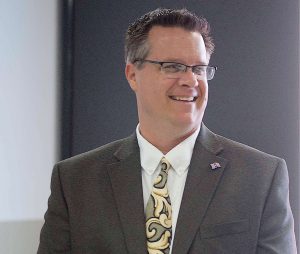
Description
Beyond the 4 Cs of an engaged learning environment (Communication, Collaboration, Critical Thinking, Creativity) comes the 5th C: Computational Thinking. Explore hands-on opportunities for computational thinking and early programing using apps and robots, as well as offline activities fostering problem-solving skills and engineering. Bring coding concepts to the hands of young learners for accessibility and engagement, including curriculum integration and ideas for embedding DLCS standards into everyday instruction. Participants will explore free online coding resources (inc. Code.org, ScratchJr, Scratch, iPad apps), review physical robotics (inc. Dash, Ozobot, Beebot, TelloDrone), and program virtual/physical computing tools (inc. Circuit Playground, Makey Makey) to transfer skills toward application.
REGISTRATION DEADLINE: April 5, 2022
Course Details
| Audience | Educators and Administrators |
| Level | K-5 |
| Instructor | Jed Stefanowicz |
| Dates |
April 12 through May 3, 2022 (4 Weeks) April 12, 19, and May 3: Live Virtual Meetings at 4:30 P.M. April 26th Week: Asynchronous (6 hours of independent work) |
| Time |
Live Virtual Meetings April 12, 19, and May 3 — 4:30 P.M. |
| Earn | 12 PDPs |
| Location | Online |
| MassCUE Member Cost | $125.00 |
| Non-Member Cost | $165.00 |
| Limit | 20 Participants |
| Graduate Credit (Optional) | 1 credit for $125 from WSU (pending) |
Instructor
Jed Stefanowicz

As a Digital Learning Coach in Walpole, Jed Stefanowicz provides job-embedded professional development and instructional coaching for academic technology. Through conference and workshop pd, Jed aims to engage and build staff/student capacity with digital tools while keeping the focus on practice over product. As a 25 year elementary educator, speaker, and blogger, Jed shares his passion for effective tech integration to transform teaching and learning, creating digital learning environments and experiences that are meaningful, memorable and measurable. Check out his blog at stefanowiczclass@blogspot.com MassCUE level 4 educator
Computational Thinking Overview, Resources & Integration Online Coding Resources Programming Robots with Blockly/ Block Coding Virtual/Physical Computing Design/Deploy Mini-Unit R&D- research and explore materials, resources, and tools Design Mini-Unit: 2-3 lessons or activities to support CT standards in gen-ed Unit Overview, Learning checks, Scale plan (Optional Virtual Check-in) Participant project showcase Program Review Next Steps Educators who would like Worcester State credit (for a fee of $125) must submit a final project. Projects may be a curriculum lesson or classroom project based in research and connected to curriculum standards. Instructors will grade the project. To obtain the credit the grade must be a B or higher. Instructor has to include in the write-up of the lesson the standards that it fulfills (could be MA standards or ISTE) as well as research showing it is a best practice. Participants will be required to create a mini-unit, comprised of 2-3 lessons or project that introduces, supports, or reviews computational thinking skills specific to their learning environment. This project aligns with MA DLCS Computational Thinking and Computer Science standards as well as ISTE Computational Thinker student standards. Reference for best practice: Instructional Design for Computational Thinking This course supports the following Massachusetts Digital Literacy and Computer Science standards: K-2.CS.a.3 Explain that computing devices function when applications, programs, or commands are executed. K-2.CS.a.4 Operate a variety of computing systems (e.g., turn on, use input/output devices such as a mouse, keyboard, or touch screen; find, navigate, launch a program). K-2.CT.b.1 Define an algorithm as a sequence of defined steps. K-2.CT.b.2 Create a simple algorithm, individually and collaboratively, without using computers to complete a task (e.g., making a sandwich, getting ready for school, checking a book out of the library). K-2.CT.b.3 Enact an algorithm using tangible materials (e.g., manipulatives, your body) or present the algorithm in a visual medium (e.g., storyboard). K-2.CT.d.1 Define a computer program as a set of commands created by people to do something. K-2.CT.d.2 Explain that computers only follow the program’s instructions. K-2.CT.d.3 Individually or collaboratively create a simple program using visual instructions or tools that do not require a textual programming language (e.g., “unplugged” programming activities, a block-based programming language). 3-5.CT.a.1 Use numbers or letters to represent information in another form (e.g., secret codes,Roman numerals, abbreviations). 3-5.CT.a.2 Organize information in different ways to make it more useful/relevant (e.g., sorting,tables). 3-5.CT.a.3 Make a list of sub-problems to consider, while addressing a larger problem. 3-5.CT.b.4 Individually and collaboratively create an algorithm to solve a problem (e.g., move a character/robot/person through a maze). 3-5.CT.b.1 Define an algorithm as a sequence of instructions that can be processed by a computer. 3-5.CT.b.2 Recognize that different solutions exist for the same problem (or sub-problem). 3-5.CT.b.3 Use logical reasoning to predict outcomes of an algorithm. 3-5.CT.b.4 Individually and collaboratively create an algorithm to solve a problem (e.g., move a character/robot/person through a maze). 3-5.CT.b.5 Detect and correct logical errors in various algorithms (e.g., written, mapped, live action, or digital). 3-5.CT.d.1 Individually and collaboratively create, test, and modify a program in a graphical environment (e.g., block-based visual programming language). 3-5.CT.d.2 Use arithmetic operators, conditionals, and repetition in programs. 3-5.CT.d.3 Use interactive debugging to detect and correct simple program errors. 3-5.CT.d.4 Recognize that programs need known starting values (e.g., set initial score to zero in a game). 3-5.CT.e.1 Individually and collaboratively create a simple model of a system (e.g., water cycle, solar system) and explain what the model shows and does not show. 3-5.CT.e.2 Identify the concepts, features, and behaviors illustrated by a simulation (e.g., object motion, weather, ecosystem, predator/prey) and those that were not included. Computational Thinking: The 5th C for Elementary Online Workshop (Optional Grad Credit): April 12 – May 3, 2022 Live Virtual Meetings: Tuesdays — April 12, 19, and May 3, 2022 — 4:30 P.M. Asynchronous: Tuesday, Week of April 26 — 6 hours of independent work Course Outline
Session 1- Synchronous Virtual (2 hr)
Session 2- Synchronous Virtual (2 hr)
Session 3- Asynchronous (6 hrs independent)
Session 4- Synchronous VIrtual (2 hr)
Optional Graduate Credit:
Final Project Requirements:
DESE Standards
Register for this Workshop
 Print this post
Print this post
